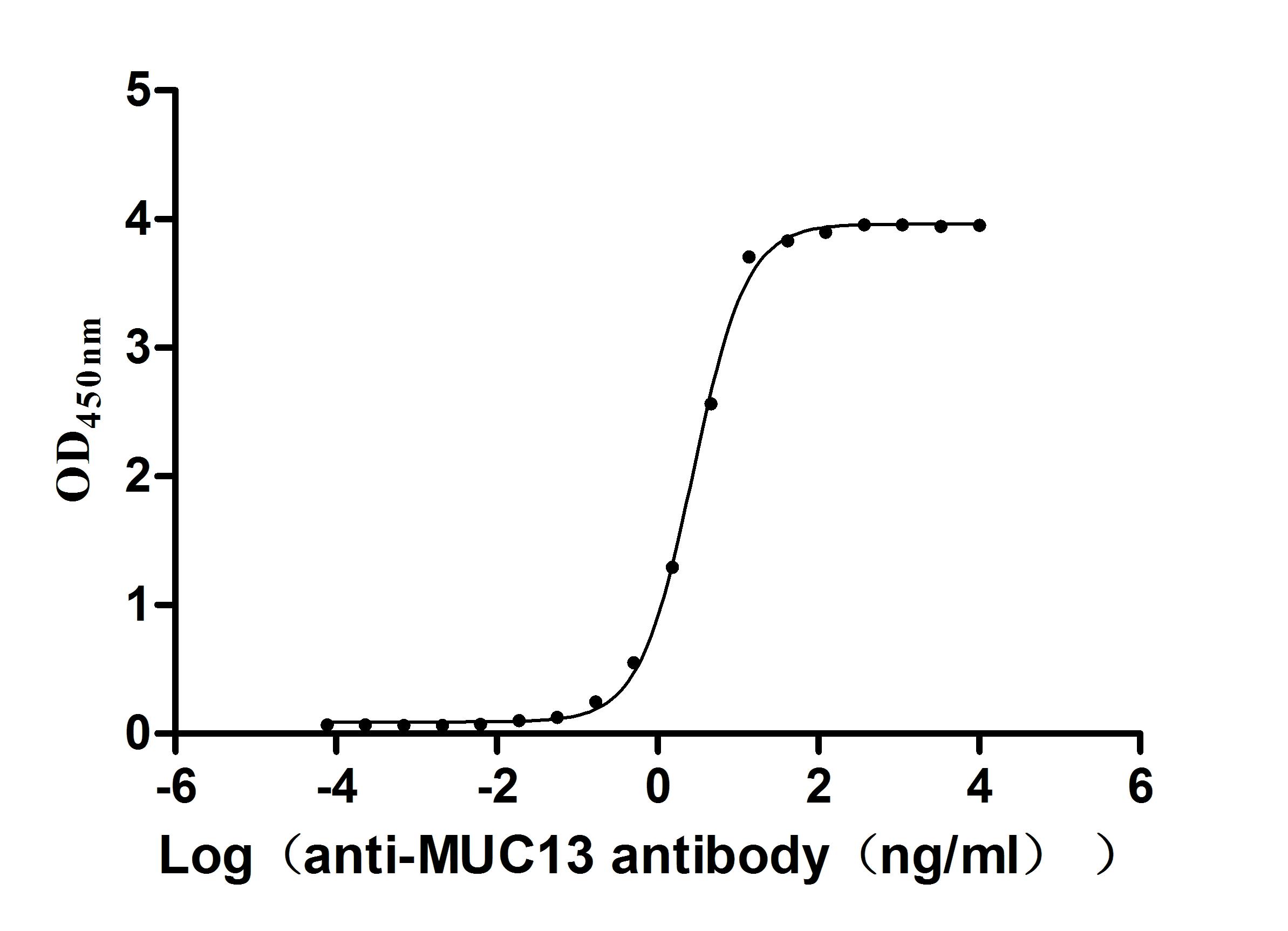Recombinant Arabidopsis thaliana Squamosa promoter-binding-like protein 9 (SPL9)
-
中文名称:拟南芥SPL9重组蛋白
-
货号:CSB-YP751202DOA
-
规格:
-
来源:Yeast
-
其他:
-
中文名称:拟南芥SPL9重组蛋白
-
货号:CSB-EP751202DOA
-
规格:
-
来源:E.coli
-
其他:
-
中文名称:拟南芥SPL9重组蛋白
-
货号:CSB-EP751202DOA-B
-
规格:
-
来源:E.coli
-
共轭:Avi-tag Biotinylated
E. coli biotin ligase (BirA) is highly specific in covalently attaching biotin to the 15 amino acid AviTag peptide. This recombinant protein was biotinylated in vivo by AviTag-BirA technology, which method is BriA catalyzes amide linkage between the biotin and the specific lysine of the AviTag.
-
其他:
-
中文名称:拟南芥SPL9重组蛋白
-
货号:CSB-BP751202DOA
-
规格:
-
来源:Baculovirus
-
其他:
-
中文名称:拟南芥SPL9重组蛋白
-
货号:CSB-MP751202DOA
-
规格:
-
来源:Mammalian cell
-
其他:
产品详情
-
纯度:>85% (SDS-PAGE)
-
基因名:SPL9
-
Uniprot No.:
-
别名:SPL9; At2g42200; T24P15.11; Squamosa promoter-binding-like protein 9
-
种属:Arabidopsis thaliana (Mouse-ear cress)
-
蛋白长度:full length protein
-
表达区域:1-375
-
氨基酸序列MEMGSNSGPG HGPGQAESGG SSTESSSFSG GLMFGQKIYF EDGGGGSGSS SSGGRSNRRV RGGGSGQSGQ IPRCQVEGCG MDLTNAKGYY SRHRVCGVHS KTPKVTVAGI EQRFCQQCSR FHQLPEFDLE KRSCRRRLAG HNERRRKPQP ASLSVLASRY GRIAPSLYEN GDAGMNGSFL GNQEIGWPSS RTLDTRVMRR PVSSPSWQIN PMNVFSQGSV GGGGTSFSSP EIMDTKLESY KGIGDSNCAL SLLSNPHQPH DNNNNNNNNN NNNNNTWRAS SGFGPMTVTM AQPPPAPSQH QYLNPPWVFK DNDNDMSPVL NLGRYTEPDN CQISSGTAMG EFELSDHHHQ SRRQYMEDEN TRAYDSSSHH TNWSL
-
蛋白标签:Tag type will be determined during the manufacturing process.
The tag type will be determined during production process. If you have specified tag type, please tell us and we will develop the specified tag preferentially. -
产品提供形式:Lyophilized powder
Note: We will preferentially ship the format that we have in stock, however, if you have any special requirement for the format, please remark your requirement when placing the order, we will prepare according to your demand. -
复溶:We recommend that this vial be briefly centrifuged prior to opening to bring the contents to the bottom. Please reconstitute protein in deionized sterile water to a concentration of 0.1-1.0 mg/mL.We recommend to add 5-50% of glycerol (final concentration) and aliquot for long-term storage at -20℃/-80℃. Our default final concentration of glycerol is 50%. Customers could use it as reference.
-
储存条件:Store at -20°C/-80°C upon receipt, aliquoting is necessary for mutiple use. Avoid repeated freeze-thaw cycles.
-
保质期:The shelf life is related to many factors, storage state, buffer ingredients, storage temperature and the stability of the protein itself.
Generally, the shelf life of liquid form is 6 months at -20°C/-80°C. The shelf life of lyophilized form is 12 months at -20°C/-80°C. -
货期:Delivery time may differ from different purchasing way or location, please kindly consult your local distributors for specific delivery time.Note: All of our proteins are default shipped with normal blue ice packs, if you request to ship with dry ice, please communicate with us in advance and extra fees will be charged.
-
注意事项:Repeated freezing and thawing is not recommended. Store working aliquots at 4°C for up to one week.
-
Datasheet :Please contact us to get it.
靶点详情
-
功能:Trans-acting factor that binds specifically to the consensus nucleotide sequence 5'-TNCGTACAA-3'.
-
基因功能参考文献:
- Results suggest the mechanism by which miR156 and miR157 regulate gene expression of SQUAMOSA PROMOTER BINDING PROTEIN-LIKE (SPL) transcription factors SPL9 and SPL13. PMID: 29672610
- Analysis of plants carrying microRNA miR156-resistant forms of SQUAMOSA PROMOTER BINDING PROTEIN LIKE (SPL) genes showed that wall ingrowth deposition was increased in SPL9-group. PMID: 28082719
- Our results uncover a molecular mechanism for plant adaptation to the environment through the miR156-SPLs-DFR pathway, which coordinates development and abiotic stress tolerance. PMID: 25345491
- One of the miR156 targets, SPL9, negatively regulates anthocyanin accumulation. PMID: 21487097
- SPL9 has a role in shoot maturation. PMID: 18278578
- Data demonstrate that miR156 is a quantitative, rather than spatial, modulator of SPL9 expression in leaf primordia and that SPL9 activity nonautonomously inhibits initiation of new leaves at the shoot apical meristem. PMID: 18492871
显示更多
收起更多
-
亚细胞定位:Nucleus. Cytoplasm. Note=Mostly located in nucleus.
-
数据库链接:
KEGG: ath:AT2G42200
STRING: 3702.AT2G42200.1
UniGene: At.498
Most popular with customers
-
Recombinant Human Cytokine receptor common subunit beta (CSF2RB), partial (Active)
Express system: Mammalian cell
Species: Homo sapiens (Human)
-
Recombinant Human Claudin-6 (CLDN6)-VLPs, Fluorescent (Active)
Express system: Mammalian cell
Species: Homo sapiens (Human)
-
Recombinant Macaca fascicularis Zinc transporter ZIP6 isoform X1(SLC39A6),partial (Active)
Express system: Baculovirus
Species: Macaca fascicularis (Crab-eating macaque) (Cynomolgus monkey)
-
Recombinant Human Urokinase-type plasminogen activator(PLAU) (Active)
Express system: Mammalian cell
Species: Homo sapiens (Human)
-
Express system: Mammalian cell
Species: Homo sapiens (Human)
-
Recombinant Human Mucin-13(MUC13),partial (Active)
Express system: yeast
Species: Homo sapiens (Human)



f4-AC1.jpg)














